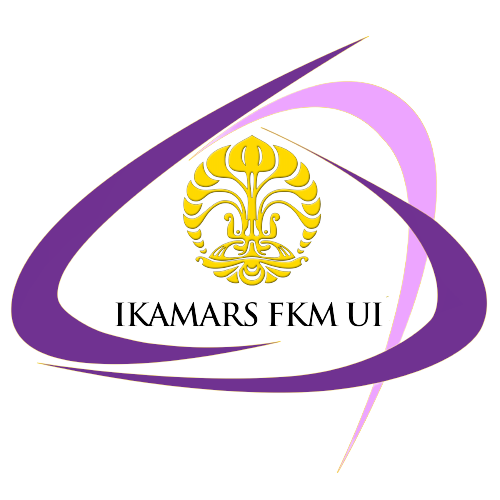Penerapan Metode ABC Indeks Kritis dalam Pengelolaan Persediaan Obat di Instalasi Farmasi Rumah Sakit XYZ Pekanbaru, Riau Tahun 2018
Abstract
Keywords
Full Text:
PDFReferences
(1) American Society of Health System Pharmacist. 2012. Statement on the Pharmacy and Therapeutics Committee and the Formulary System.https://www.ashp.org/-/media/assets/policy-guidelines/docs/guidelines/gdl-pharmacy-therapeutics-committee-formulary-system.ashx?la=en&hash=EF1E4214CC91C65097AEEECE91BF6EC985AE3E56
(2) Direktorat Jenderal Bina Kefarmasian dan Alat Kesehatan, Kementerian Kesehatan Kesehatan RI. 2010. Pedoman Pengelolaan Perbekalan Farmasi di Rumah Sakit. https://galihendradita.files.wordpress.com/2015/03/pedoman-pengelolaan-perbekalan-farmasi-2010.pdf. Diakses tanggal 14 September 2018.
(3) Direktorat Jenderal Bina Kefarmasian dan Alat Kesehatan, Kementerian Kesehatan Kesehatan RI. 2010. Standar Pelayanan Farmasi Rumah Sakit. http://binfar.depkes.go.id/dat/lama/1203407607_STANDAR%20PELAYANAN%20FARMASI%20DI%20RS%20.pdf. Diakses tanggal 20 September 2018.
(4) Gebicki, M., Mooney, E., Chen, S. (., &Mazur, L. M. 2014. Evaluation of Hospital Medication Inventory Policies. Health Care Management Science, 17(3), 215-29. https://remote-lib.ui.ac.id:2155/docview/1555370172/fulltextPDF/BD5EC8AA5B654D44PQ/1?accountid=17242. Diakses tanggal 15 September 2018.
(5) Kementerian Kesehatan Republik Indonesia. 2016. Peraturan Menteri Kesehatan Republik Indonesia Nomor 72 tahun 2016 tentang Standar Pelayanan Kefarmasian di Rumah Sakit. Jakarta.
(6) King, Peter L. 2011. Understanding Safety Stock and Mastering Its Equations. APICS Magazine.http://web.mit.edu/2.810/www/files/readings/King_SafetyStock.pdf. Diakses tanggal 04 Desember 2018.
(7) Kumar, S., & Chakravarty, A. 2015. ABC–VED analysis of expendable medical stores at a tertiary care hospital.Medical Journal, Armed Forces India,71(1), 24–27.https://www.ncbi.nlm.nih.gov/pmc/articles/PMC4297849/#bib4. Diakses tanggal 15 September 2018.
(8) Migbaru, S. Vigeremu, M. Woldegerima, B. Shibesi, W. ABC-VEN Matrix Analysisof pharmaceutical in Tikur Anbessa Specialized Hospitalfor the years 2009-2013, Ethiopia. Indian Journal of Basic and Applied Medical Research; March 2016: Vol.-5, Issue- 2, P. 734-743.
(9) Organization for Economic Cooperation and Development. 2013. Health at a Glance: OECD Indicators, OECD Publishing. https://www.oecd-ilibrary.org/docserver/health_glance-2013-en.pdf?expires=1536921513&id=id&accname=guest&checksum=C1409E847B06EFCD68CD4A66DC35A0DA. Diakses tanggal 14 September 2018.
(10) Republik Indonesia. 2009 Undang-undang Republik Indonesia nomor 36 tahun 2009 tentang Kesehatan. Jakarta.
(11) Republik Indonesia. 2009. Undang-Undang Republik Indonesia Nomor 44 tahun 2009 tentang Rumah Sakit. Jakarta.
(12) Romero, Alejandro. 2013. Managing Medicines in the Hospital Pharmacy: Logistics Inefficiencis.http://www.iaeng.org/publication/WCECS2013/WCECS2013_pp1120-1125.pdf. Diakses tanggal 20 September 2018.
(13) USAID, Deliver Project. 2011. The Logistics Handbook, a Practical Guidefor Supply Chain Management of Health Commodities.
(14) WHO. 2014. Hospital Pharmacy Management. Management Science for Health. http://apps.who.int/medicinedocs/documents/s19622en/s19622en.pdf.
(15) Wibowo, A. 2014. Metodologi Penelitian Praktis Bidang Kesehatan. Jakarta: PT Raja Grafindo Persada.
DOI: http://dx.doi.org/10.7454/arsi.v5i2.3196
Refbacks
- There are currently no refbacks.








